
The Civil War was fought, "at the end of the medical Middle Ages." claimed the Union Army Surgeon General.
Little was known about what caused disease. Little was done to stop disease from spreading. There were few cures for disease, so doctors turned to folk medicine or bloodletting. Surgical techniques were barbaric and many surgeons were barely competent. Civil War soldier's chances of not surviving the war were roughly one in four. These fallen men were cared for by underqualifled, understaffed, and undersupplied medical corps. Sometimes the very means used to keep the men from suffering caused their very death.
Deaths from Chloroform...
CASE 1236.--Private G. Budlinger, 76th Ohio, aged 30 years, admitted into hospital of 1st division, Fifteenth Corps, with a shot wound of hand; placed upon operation table and about a drachm of chloroform sprinkled upon four folds of patent lint applied to face, space being given for the free admission of air. After breathing it for a few moments quietly without any apparent effect, more chloroform was added and reapplied by a nurse in attendance (the surgeon having stepped aside for a moment), when, after six or seven respirations, the patient drew up his legs and arms convulsively, and heavy stertorous breathing came on. Chloroform removed immediately, and a few moments given him to resume his regular breathing, but the difficulty increased; frothy exudation from mouth,excess of saliva; respiration became more and more incomplete, pulse small and imperceptible, veins of neck and face prominently distended; heart action ceased before respiration had entirely stopped. Friction to extremities, cold water dashed in face, jugular vein opened, artificial respiration, without relief. The surgeons of the hospital reported, as the result of an autopsy, that being unable to discover any other abnormal condition, and its the absence of further evidence, it may be proper to conclude that this is a case of apoplexy induced by chloroform.
CASE 1267.--Private Francis Heward, Co. F, 1st New Jersey, was admitted into Fairfax Seminary Hospital, April 5, 1862, with a dislocation of left humerus forward and inward of a few hours' standing. Surgeon Henry A. Armstrong, 2d New York Artillery, reduced the bone without assistance. On May 6th Acting Assistant Surgeon H. W. Ducachet discovered that the bone wits again out of place in the same direction. The patient was chloroformed and reduction attempted with the heel in the axilla, but without success. On the 9th pulleys and counter-extending hands were obtained and adjusted. Chloroform was again administered, a drachm being poured upon a piece of lint about two inches square and held about three inches from his face, a towel being thrown over the head of the patient and hand of the operator, and which was removed from time to time to admit air. Some time elapsed before the muscles became relaxed, when the chloroform was removed. There was no stertorous breathing, choking, or struggling, nor was there occasion to use force to keep him down, as at the previous administration. There was, as there always is, congestion of the conjunctiva and vessels of the neck, but not as much, certainly not more, than when the chloroform was administered on the 6th. Reduction was being attempted when symptoms of asphyxia were noticed; the pulleys were instantly relaxed, the tongue drawn forward, and artificial respiration resorted to, but everything failed. No autopsy was made. The report of the case is signed by Surgeon H. A. Armstrong and Acting Ass't Surgeon H. W. Ducachet.
CASE 1275.--Private Henry S. Ware, Co. K, 38th New York, aged 23 years, was struck by a shell in the upper part of the right leg at the battle of Williamsburg, May 5, 1862, for which injury the limb was removed on the field, at the middle third of the thigh. He was admitted into the general hospital at David's Island, New York Harbor, on June 15th, and came under the care of Acting Assistant Surgeon E. B. Root on June 26th, at which time his general condition was bad. He was suffering from diarrhœa and a very large bed-sore. The wound had nearly united but the bone was denuded. The constant discharge from the stump necessitated the removal of the necrosed bone. On October 9th the patient was placed under the influence of ether and an inch of bone removed with the chain saw, and then two inches off the bone with its involucrum. During the operation the femoral artery was divided, but not much blood was lost. Altlough it was found that more of the shaft was involved, further operative interference was deemed unnecessary. The patient was removed to his bed, when severe vomiting commenced which continued to the time of his death, within seventy-two hours. The post-mortem examination showed all the viscera healthy. Surgeon S. W. Gross, U. S. V., ascribes the death to the effects of the ether superadded to the previous exhausted condition of the system. The constant vomiting and retching could not be arrested.
* Photo of Chisolm's Inhaler
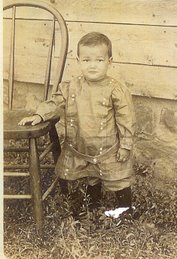
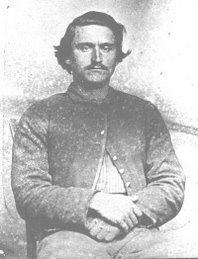

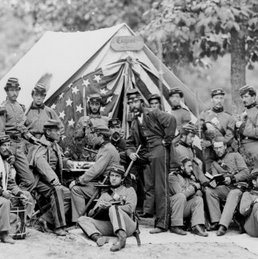

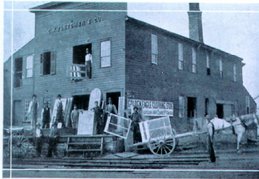
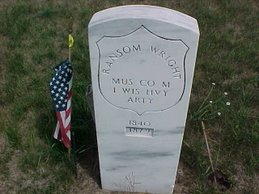

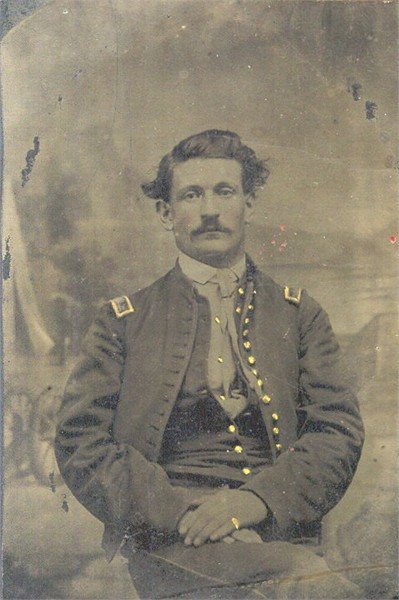
2 comments:
What a wonderful site, very interesting.
Thank you for sharing.
Annie
Thanks for you comment. It's great to know that someone else has stopped by this Civil War blog!
Post a Comment